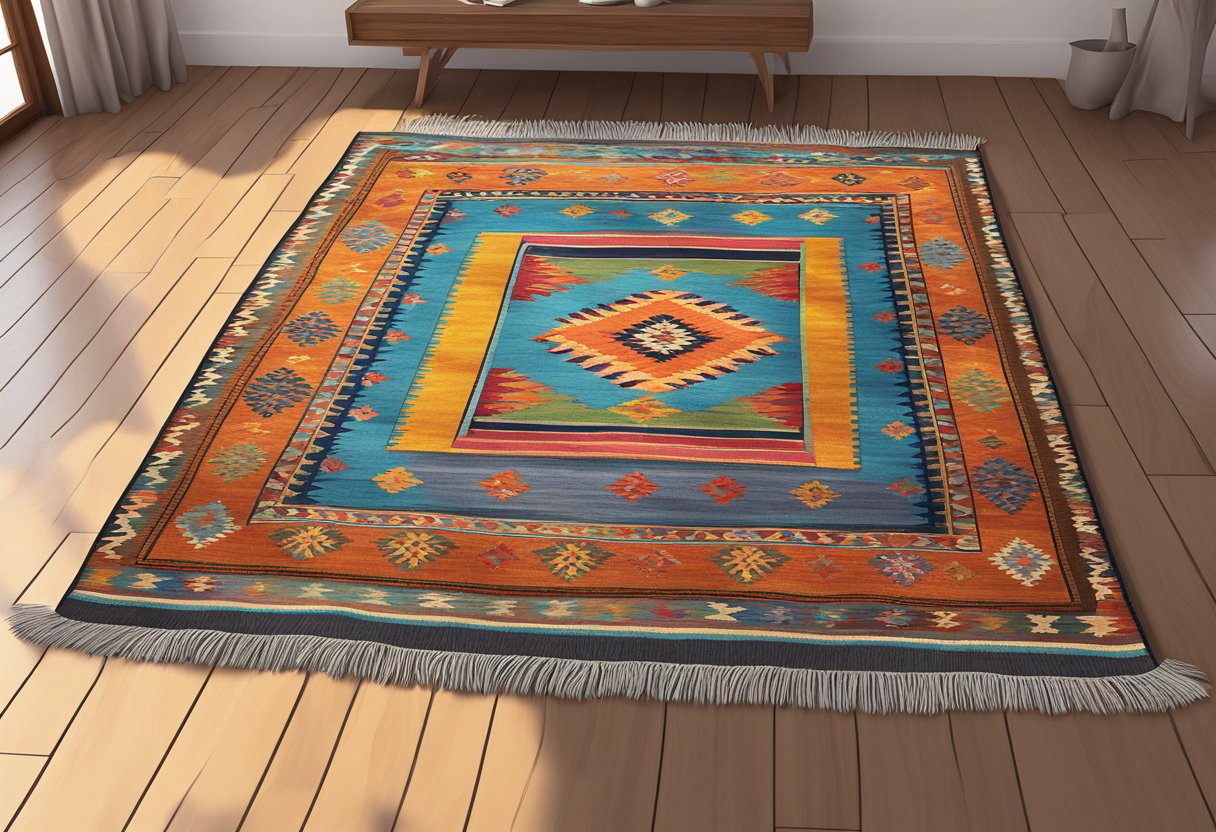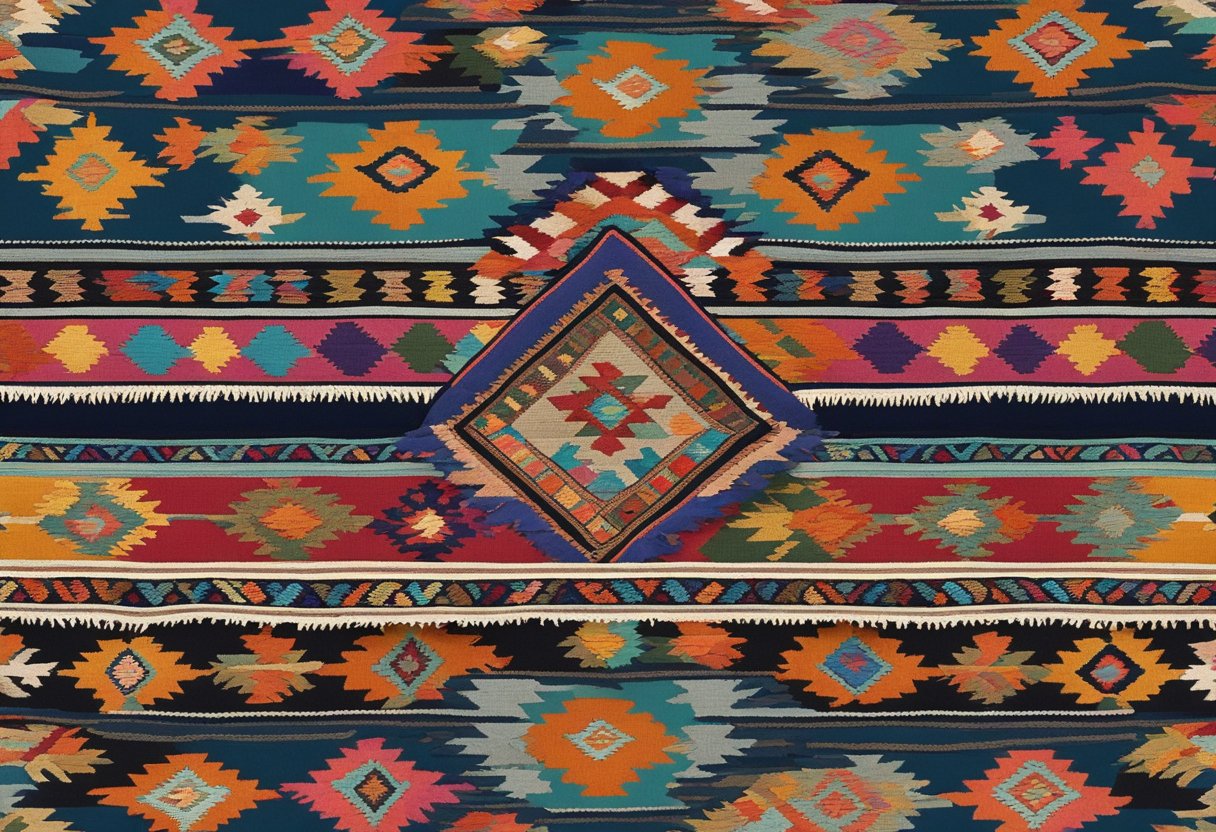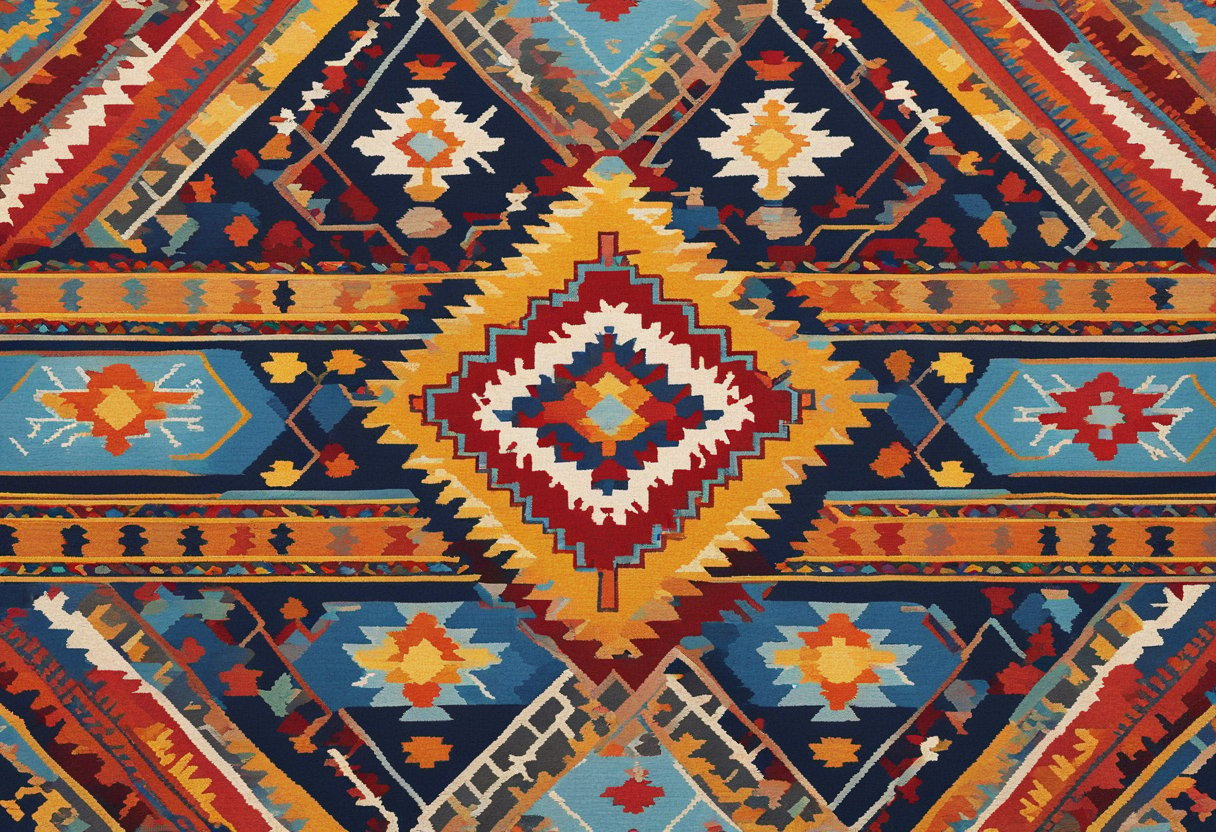What is the History of Kilim? Exploring Its Artistic and Cultural Evolution

Kilim, a type of tapestry-woven textile, has a rich history that spans centuries and regions. These rugs, characterized by their flat, pileless nature, originate from the former Persian Empire, including modern-day Iran, Turkey (Anatolia and Thrace), the Balkans, and the Turkic countries. What makes Kilim unique is its intricate geometric designs and vibrant colors, produced through a special flat weaving technique. This method not only creates stunning visuals but also ensures durability.
The origins of Kilim date back to around 1000 BC, with some of the earliest known pieces discovered in Egypt at Fostat, demonstrating its ancient cultural significance. Historically, kilims served various functions from prayer rugs to wall hangings, and even as functional objects like table covers and bags. This versatility made them integral to daily life and cultural practices across many regions.
Kilim weaving techniques became an essential part of the cultural heritage in Turkey, Iran, Afghanistan, and Central Asia. These textiles often carry symbolic meanings, reflecting the weaver's personal stories or regional traditions. Kilim rugs are not just decorative items; they are cultural artifacts that tell the story of the communities that produced them.
Origins and Historical Development
The history of Kilim spans thousands of years, originating with ancient weaving traditions and spreading across diverse cultures through trade and migration. It reflects a blend of artistic expression and practical utility.
Prehistoric Beginnings and Early Trade
Kilim weaving techniques can trace their origins back to around 1000 BC. Excavations at the ancient site of Çatalhöyük in Turkey revealed early examples of flatwoven textiles. These finds suggest that communities in Anatolia had already mastered intricate weaving techniques. Nomadic tribes in Central Asia also contributed to kilim development. They used these flatwoven rugs for practical purposes, such as floor coverings and wall hangings. Early trade routes facilitated the exchange of kilim between regions. This movement enabled the spread of weaving techniques and designs, influencing diverse cultures.
Spread Across Cultures
By the medieval period, kilims were widely produced and used across the former Persian Empire, Turkey, the Balkans, and parts of North Africa. Historical records, including those by Marco Polo, indicate extensive trade and cultural exchange involving kilim rugs. Kilim weaving was not limited to professional weavers in cities. Many villages and nomadic tribes also created their own distinctive styles. In Anatolia, each village or tribe often had unique patterns and color combinations, reflecting their cultural heritage. The shared knowledge across generations ensured the continuity and evolution of kilim weaving techniques and designs. Kilim weaving remains an enduring art form, demonstrating the skills and cultural values of diverse peoples throughout history. Whether in museums or homes, these rugs connect us to a rich, multi-faceted past.
Cultural Significance

Kilim rugs carry deep cultural meaning beyond their visual appeal. They are not just decorative items, but symbols of life, beliefs, and social roles. This section explores the symbols and motifs, their utilitarian and social uses, and how they express artistic identity.
Symbols and Motifs
Symbols and motifs in kilims serve as a tapestry of coded messages. Common designs include the elibelinde, representing the mother goddess and fertility, scorpions for protection, and the evil eye to ward off malevolent spirits. Birds often symbolize love and happiness, while stars can stand for spirituality and hope. Each motif is infused with the weaver's intentions, reflecting both personal and cultural beliefs.
Utilitarian and Social Use
Kilims are woven for various practical uses and hold significant social value. Nomadic tribes use them in tents as floor coverings, bags, and hangings. Villages incorporate them into daily life, using them as mosque hangings or prayer rugs. Kilims are often given as gifts, marking important social events such as marriages. They serve both a functional role and as a means of expressing community ties.
Artistic Expression and Identity
For many weavers, creating a kilim is a form of artistic expression. Each kilim is unique, reflecting the weaver’s identity and heritage. The choice of colors, patterns, and weaving techniques embodies regional and personal styles. These rugs encapsulate cultural narratives, preserving the history and traditions of the communities from which they originate. Through their craft, weavers contribute to the cultural tapestry of the varied regions where kilims are produced.
Artistry and Techniques
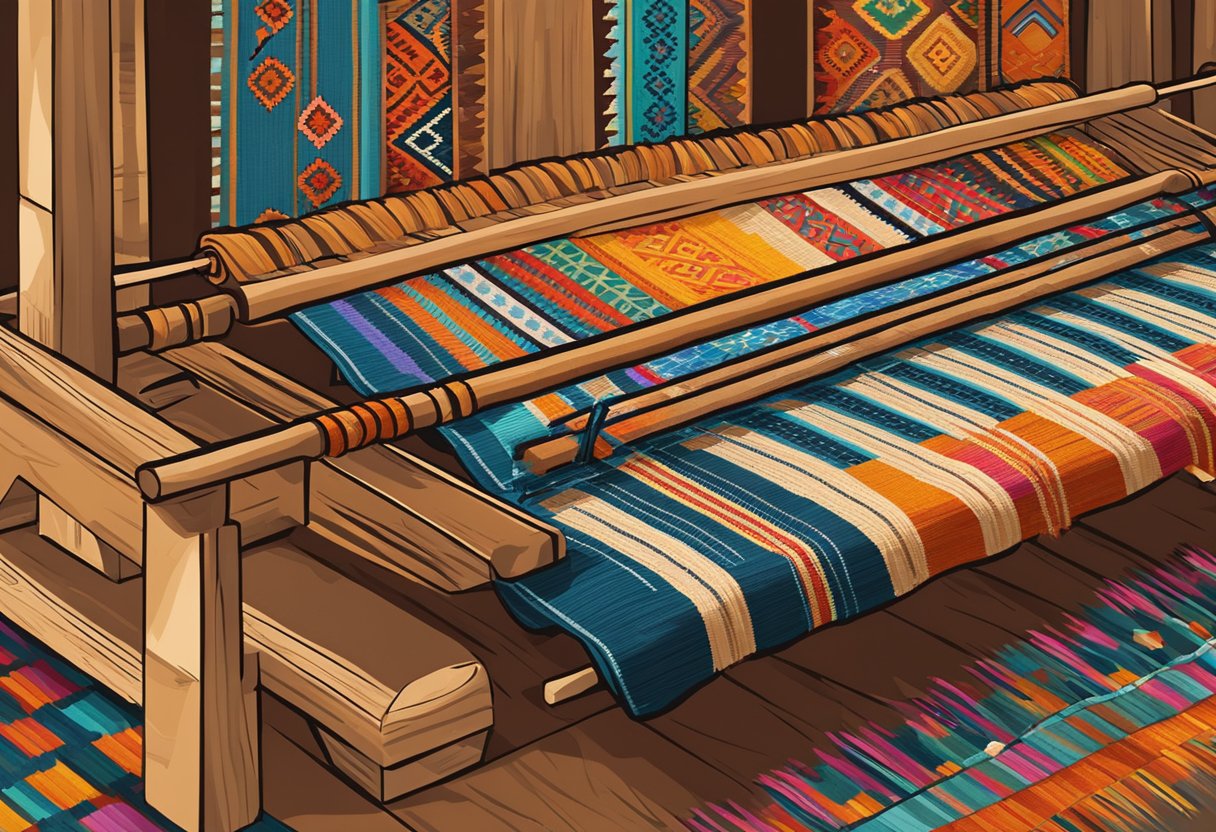
Kilim rugs are admired for their craftsmanship and intricate designs. This section explores the materials used, the details of the weaving process, and the distinctive patterns that make these rugs unique.
Materials and Preparation
Kilim rugs are typically made from natural fibers like wool, cotton, and sometimes silk. Wool is preferred for its durability and softness, while cotton is used for its strength. In some regions, merino wool is utilized for an even finer texture. Before weaving begins, the yarn is spun and dyed, often using natural dyes derived from plants, minerals, and insects. These natural dyes create vibrant and bright colors that are a hallmark of kilim rugs. The process also involves washing the yarn in running water to ensure it is clean and ready for weaving.
Weaving Process
The weaving process of kilim rugs is done on a loom using a flatweave technique. This technique involves interweaving the warp (vertical threads) and weft (horizontal threads) to create a tightly woven, pileless surface. A common method used is the slitweave technique, where small gaps or slits are left between different colored sections, creating sharp, geometric designs. Weavers often work by hand, requiring significant skill and attention to detail. The hand-woven nature of kilims ensures that each piece is unique. The time it takes to complete a rug can vary depending on size and complexity, often taking weeks or even months.
Distinctive Patterns and Designs
Kilim rugs are known for their geometric designs and bright colors. These patterns often include symbols and motifs that hold cultural significance. For example, certain designs may represent fertility, protection, or prosperity. The designs are created by carefully selecting and interweaving different colored yarns. Common patterns include diamonds, zigzags, and stripes. The use of vibrant colors makes the designs stand out and adds to the aesthetic appeal. Different regions have their own distinctive styles, making it possible to identify the origin of a kilim based on its patterns and colors. This diversity in design reflects the rich cultural heritage and artistic expression embedded in kilim rugs.
Regional Variations
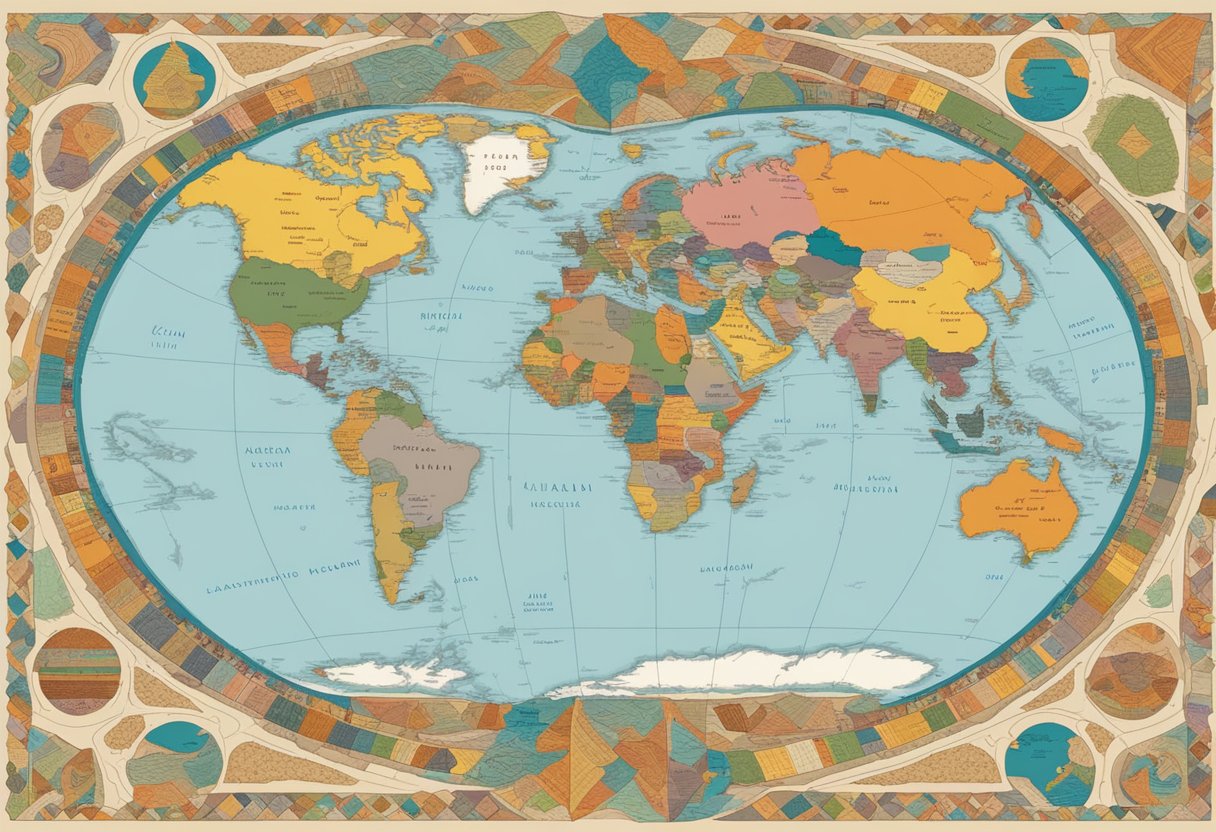
Different regions have distinct styles and techniques in kilim production, reflecting local traditions, materials, and needs. Some key areas include Anatolia, Persia, and the Caucasus, each contributing unique characteristics to this art form.
Anatolian Kilims
Anatolian kilims, primarily from the Konya and Malatya regions of Turkey, are known for their vibrant colors and bold geometric patterns. These rugs often feature symbols such as hands, combs, and amulets believed to ward off evil. Materials like wool and natural dyes are commonly used. The slitweave technique is predominantly employed, creating a tapestry with defined edges and intricate designs.
Persian and Caucasian Influences
In Persia and the Caucasus, kilims feature more intricate patterns and a broader color palette. Famous for motifs like rosettes and continuous patterns, they incorporate floral and vine elements, which reflect the Persian artistic heritage. Caucasian kilims often display tribal symbols and animal motifs. The quality of weaving and fine detailing in these regions is highly regarded, making their kilims highly collectible.
Contemporary Adaptations
Modern kilims combine traditional methods with contemporary designs to appeal to a global market. Incorporating new materials like synthetic fibers and experimenting with abstract patterns, they are used in various applications such as furniture, wall hangings, and even fashion accessories. Many contemporary artisans stay true to traditional techniques, ensuring that the cultural heritage is preserved while meeting modern tastes and requirements.
Kilim in Modern Decor

Kilim rugs have found a solid place in modern decor, bringing both aesthetic appeal and practical use. These rugs, known for their vibrant colors and geometric designs, are now seen not only as floor coverings but also as integral parts of home interiors, fashion items, and versatile decorative pieces.
Home Interiors
Kilim rugs are popular choices for "home interiors" due to their colorful and intricate patterns. They are often used as floor coverings in living rooms, bedrooms, and hallways, adding a pop of color and a touch of tradition. Furniture pieces like ottomans and couches are sometimes upholstered with kilim fabric, making them unique and eye-catching. Kilim wall hangings bring texture and interest to plain walls, turning them into focal points. Table covers and bedspreads made from kilim introduce a rustic yet stylish element to home decor.
Fashion and Beyond
In the world of fashion, kilim designs are increasingly seen in items like bags and shoes. Bags crafted from kilim fabric are durable and boast unique, colorful patterns that stand out. Similarly, kilim shoes are becoming a fashion statement, offering a blend of comfort and style with an ethnic touch. Beyond traditional uses, kilim is found in various home accessories such as pillows and throws, enhancing the texture and color scheme of living spaces.
Care and Maintenance
Proper care and maintenance of kilim items ensure their longevity. Regular vacuuming without a beater bar helps keep kilim rugs clean and free from dust. Spills should be blotted immediately with a clean, dry cloth to prevent staining. For more thorough cleaning, professional services that specialize in kilim and other delicate textiles are recommended. Avoid placing kilim rugs in high-traffic areas to prevent excessive wear and tear. Rotating the rug can also help in evenly distributing wear, prolonging its life. By following these simple maintenance steps, homeowners can keep their kilim items looking vibrant and beautiful for many years.
Kilim Collecting and Trade
Kilim collecting has seen a rise due to the antique value and unique artistry of these handcrafted textiles. Modern production has adapted to meet global demand while preserving traditional techniques.
Antique Kilims and Market Dynamics
Antique kilims can be found in specialized stores, auctions, and online marketplaces. Antique kilims, particularly those from Turkey and Istanbul, often attract collectors due to their historical and decorative value. Collectors value older pieces for their craftsmanship and age. Market prices can vary significantly based on the kilim's condition, origin, and rarity. In recent years, there has been increased interest in kilims from countries that were part of the former Persian Empire, including Iran and Turkey. This has led to a more active marketplace, with items frequently changing hands among enthusiasts and collectors.
Modern Production and Workshops
Modern kilim production still relies heavily on traditional weaving techniques. Many workshops and smaller factories produce kilims, often employing weavers who use methods passed down through generations. The city of Istanbul remains a significant center for both production and trade of kilims. Today's kilims may be handmade or machine-woven, with handmade pieces typically being more sought after. The designs continue to draw from historical patterns but are also evolving to suit contemporary tastes. The use of traditional methods in modern workshops helps preserve the unique qualities that define kilims, ensuring that the artistry remains alive for future generations.
Preservation and Legacy
Kilim rugs hold significant historical and cultural value, showcased in museums and extensively documented to preserve their heritage.
Museums and Exhibitions
Many museums worldwide house kilim rugs, highlighting their cultural importance. In Istanbul, the Turkish and Islamic Arts Museum displays an extensive collection of these textiles. The Textile Museum in Washington D.C. also showcases kilim rugs, covering various weaving traditions and their significance.
Special exhibitions often feature kilim rugs, emphasizing their intricate geometric patterns and vibrant colors. These exhibits provide insights into the history and craftsmanship of kilim weaving, drawing attention to these valuable artworks. Through detailed curation, museums help protect and celebrate the legacy of kilims.
Cultural Heritage and Documentation
Efforts to document kilim rugs ensure their traditions and stories are not lost. Scholars analyze the cultural significance of different patterns and symbols used in kilim designs. Historical texts, research papers, and photographic archives contribute to this effort. Communities involved in kilim weaving often participate in projects to record their techniques and traditional knowledge. This documentation helps maintain the rich heritage of kilim weaving, supporting its ongoing practice and appreciation. By preserving these records, the legacy of kilim rugs continues to thrive for future generations.


